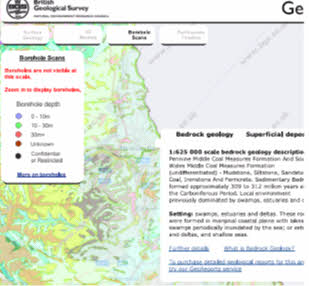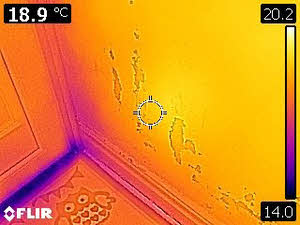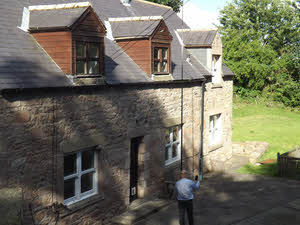Alan Holmes Building Surveying Ltd invest in training and equipment to help during building surveys to provide our clients with the most thorough and accurate report available.
Prior to carrying out the actual building survey, AHBSS carry out a desk top study using historic OS maps, environmental search (environment agency), Radon maps, BS8104 exposure zones and British Geological Maps.

This initial (pre survey) investigation gives the surveyor knowledge of the area and allows the surveyor to be prepared for conditions which may lead to building defects.
This investigation was essential when surveying a subsidence case in High West Jesmond, where a ‘culvert’ was identified from historic maps which ran under the property. During the survey, the Surveyor using techniques such as Telescopic pole photography, allowed the surveyor to inspect parts on the roof / chimney / dormer details which would, without these techniques be hidden.
Thermal imaging cameras are becoming an increasingly useful tool with directional temperature readings to identify dampness and defects.
The thermal imaging was an essential piece of equipment recently when it identified leaking underfloor heating pipes in a concrete floor.

The surveyor is also assisted by electric moisture meters, carbide moisture meters, and hygrometers. Back in the office samples recovered can be analysed for Nitrates, which help to identify condensation, penetrating damp or rising dampness.

Digital photography and video equipment assist the surveyor on providing the most detailed of surveys, recording findings and also using zoom technology for close inspection of the building fabric. Using Leica Disto and Plug’n Draw software we can convert direct on site measurements to AutoCAD. The Disto communicates wirelessly with a notebook or tablet.
Borescope inspection fitted with cameras are also used to examine wall tie condition within cavities and photograph the evidence without the need to remove bricks.
Investigating subsidence often needs specialist involvement with CCTV surveys of underground drains, dye testing of drains and trial holes and boreholes with soil analysis assisting the surveyor’s knowledge of direction and mode of cracking to fully determine the cause of subsidence.
Using advanced technology AHBSS can provide the most accurate of reports delivered in electronic format.
